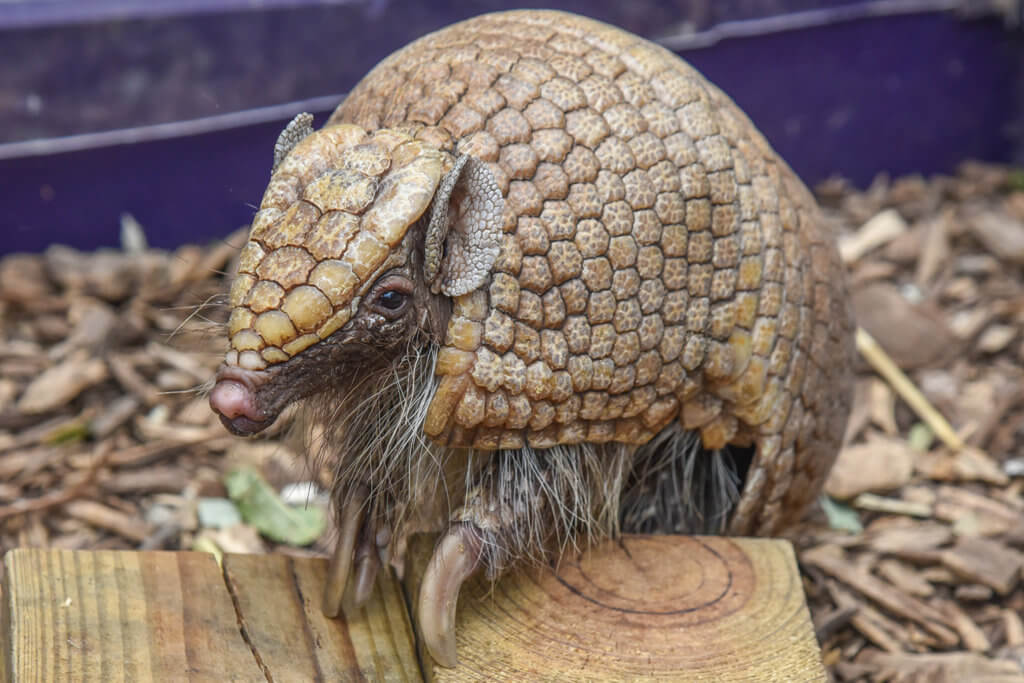Overview
“Where I live”
Southern three-banded armadillos are found primarily in dry forests and grasslands of Argentina, Boiva, Brazil, and Paraguay. They can also be found in and around agricultural fields. Although mainly nocturnal, armadillos may be a bit more active during the day when the weather is cooler.
“How I live there”
Southern three-banded armadillos are small mammals covered in an armor of hard, bony plates called scutes. Thanks to this armor, three-banded armadillos can move around confidently each night in search of ants and termites. During the day these armadillos rest in burrows to keep cool and safe. Southern three-banded armadillos rarely dig their own burrows, prefering to take over the abandoned burrows of other animals. If none are available, they will make temporary nests out of grasses and leaves.
“Making my mark”
The bony plates (scutes) of armadillos make them instantly recognizable. In southern three-banded armadillos, this protective adaptation goes a step further. When threatened, a southern three-banded armadillo can roll completely into a ball, shielding its soft belly. Small gaps between the curled-up armadillo’s scutes can pinch the skin or fingers of predators that try to pry open this potential meal.
“What eats me”
The bony armor of three-banded armadillos protects them from most animals. However, large mammals like jaguars and maned wolves can successfully hunt members of this species. Because their predators are mainly nocturnal, young armadillos will venture out in the late afternoon to return to the safety of their burrows earlier in the evening.
Southern three-banded armadillos are occasionally hunted by people for food, scute collecting, or the pet trade. Their defense strategy of curling into a ball makes these armadillos easy for humans to catch, meaning that humans can potentially become a major threat to southern three-banded armadillos.
Raising Young
Not much is known about three-banded armadillo reproduction and raising of young. Males and females may have overlapping home ranges that help them find mates. After mating, each quickly returns to its own burrow. After a 120-day gestation period, females give birth to one offspring. The infant armadillo looks like a smaller version of the adult, but has softer scutes. Young armadillos are raised by the female only, and are independent in just 72 days. After leaving its mother’s care, a young southern three-banded armadillo may share a home range with its mother for a short time.
Taxonomy
- Kingdom: Animalia
- Phylum: Chordata
- Subphylum: Vertebrata
- Class: Mammalia
- Order: Cingulata
- Family: Chlamyphoridae
- Genera: Tolypeutes
- Species: matacus

